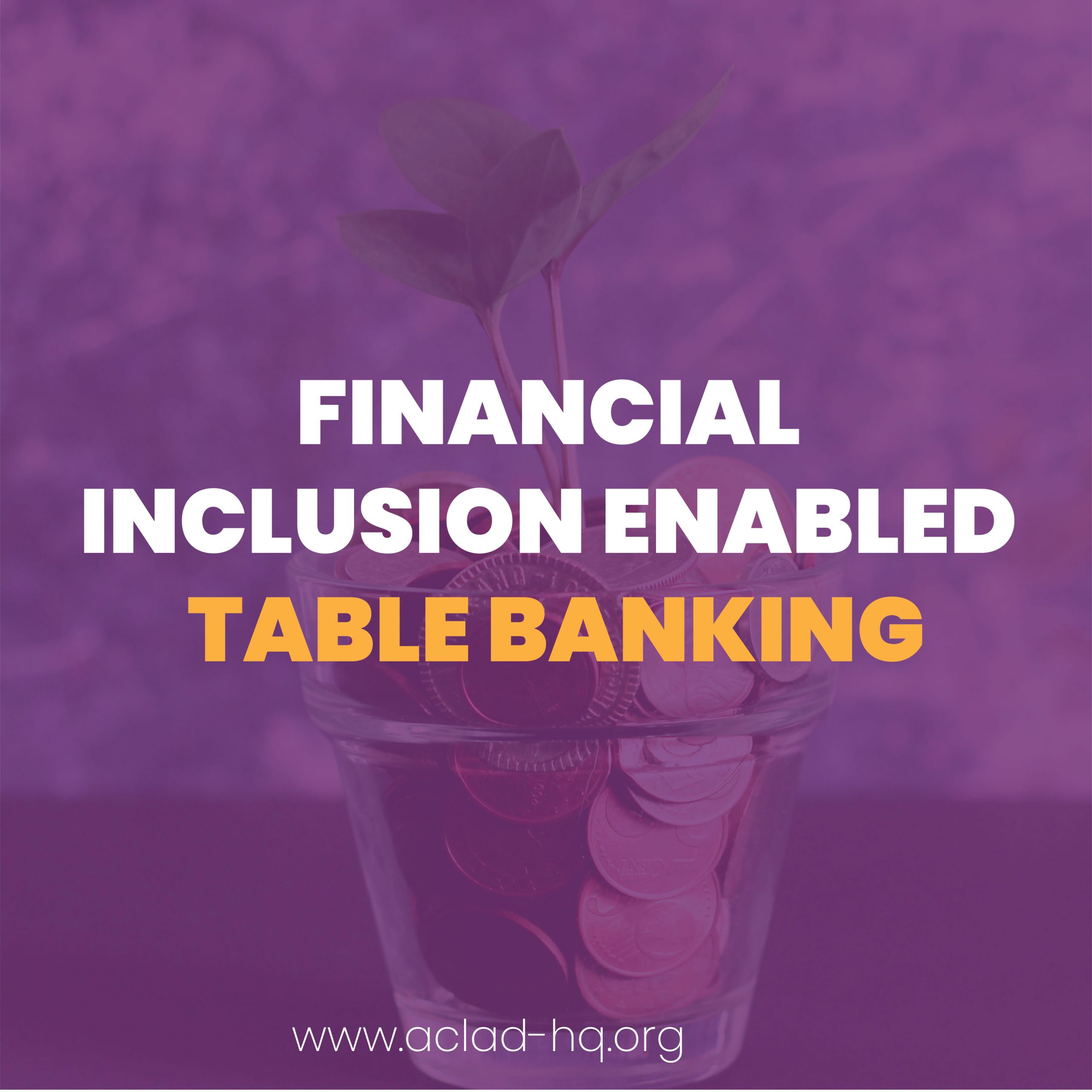Financial inclusion enabled through table banking

Financial inclusion[1] is positioned as an important facilitator of the other 2030 Sustainable Development Goals (SDGs). This is because it is included as a target in eight of the seventeen goals. These include SDG 1, 2, 3, 5, 8, 9, 10, and 17. SDG 5 focuses on achieving gender equality and economic empowerment of women, SDG 8 on promoting economic growth and jobs, SDG 9 on supporting industry, innovation, and infrastructure and SDG 10 on reducing inequality. In addition, SDG 17 on strengthening the means of implementation pushes for greater financial inclusion through greater savings mobilization for investment and consumption that can spur growth.
In as much as financial inclusion is listed as a vital target to achieving eight of the seventeen global SDGs, women have more often than not been left out and are unable to access loans from commercial banks. This exclusion has led to the development of a banking concept known as table banking mushrooming and being used by women groups. This concept is helping women unable to meet conditions such as collateral demanded by traditional banks when applying for a loan. Table banking is a method of group funding in which group members meet weekly, bi-weekly or monthly, make monetary contributions to form a kitty from which members save and get long-term or short-term loans from their savings. In some groups, the interests required when repaying the loan is as low as 1% which is favorable to the borrower as compared to the interest rates offered at the banks.
At ACLAD, members of the Uwazi women group have taken table banking up a notch by practicing cereal banking. These women accumulate the maize and beans harvested from their farms and sell them on a large scale. They develop savings from the profit they make after each sale which is brought to the kitty. They also do agribusiness with vegetables and each member contributes KShs 50 weekly after the vegetable sale to boost their group savings. This enables them to acquire individual loans and return with a 10% interest within two weeks. The money borrowed is used for boosting their individual businesses, enhance livelihood pay school fees for their children and for household consumption.
There are many advantages of practicing such table banking as giving the group members a sense of pride since the ‘table bank’ is owned by the group, and also all interest earned from loans goes back to the kitty and at the end of the year, the returns are better. Since table banking can be used by anyone, it gives the resource-poor a chance for financial inclusion as they can contribute as little as KShs 50. Table banking is convenient as members are within the community and they can interact freely and exchange information and impart skills with regard to making investments.
Catherine Muteithia
ACLAD Media Consultant
[1] https://www.uncdf.org/financial-inclusion-and-the-sdgs
